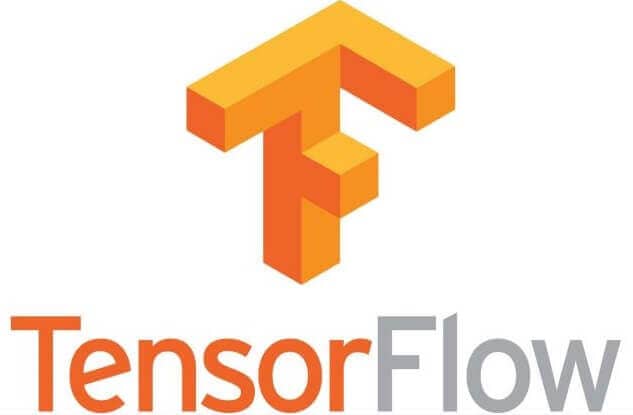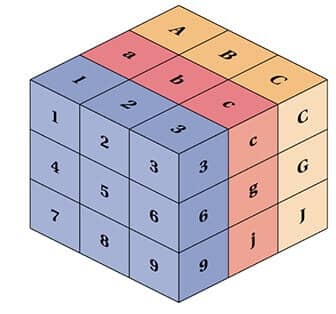TensorFlow.js 教程

什么是 TensorFlow.js?
张量流很受欢迎JavaScript图书馆机器学习。
Tensorflow 让我们能够在以下环境中训练和部署机器学习浏览器。
Tensorflow 让我们可以将机器学习功能添加到任何Web应用程序。
使用 TensorFlow
要使用 TensorFlow.js,请将以下脚本标记添加到您的 HTML 文件中:
示例
<script src="https://cdn.jsdelivr.net/npm/@tensorflow/tfjs@3.6.0/dist/tf.min.js"></script>
如果您始终想使用最新版本,请删除版本号:
示例2
<script src="https://cdn.jsdelivr.net/npm/@tensorflow/tfjs"></script>
TensorFlow 是由谷歌大脑团队供 Google 内部使用,但于 2015 年作为开放软件发布。
2019 年 1 月,Google 开发者发布了 TensorFlow.js,JavaScript 实现TensorFlow 的。
Tensorflow.js 旨在提供与用 Python 编写的原始 TensorFlow 库相同的功能。
张量
TensorFlow.js是一个JavaScript定义和操作的库张量。
TensorFlow.js 中的主要数据类型是张量。
张量与多维数组非常相似。
张量包含一维或多维的值:

张量具有以下主要特性:
| 属性 | 描述 |
|---|---|
| 数据类型 | 数据类型 |
| 秩 | 维数 |
| 形状 | 各维度的大小 |
有时在机器学习中,术语“方面" is used interchangeably with "秩。
[10, 5] 是二维张量或二阶张量。
此外,术语"dimensionality" 可以指一维的大小。
示例:在二维张量 [10, 5] 中,第一维的维度为 10。
创建张量
TensorFlow 中的主要数据类型是张量。
张量是从任何 N 维数组创建的tf.tensor() 方法:
示例1
const myArr = [[1, 2, 3, 4]];
const tensorA = tf.tensor(myArr);
示例2
const myArr = [[1, 2], [3, 4]];
const tensorA = tf.tensor(myArr);
示例3
const myArr = [[1, 2], [3, 4], [5, 6]];
const tensorA = tf.tensor(myArr);
张量形状
张量也可以从数组和一个形状范围:
示例1
const myArr = [1, 2, 3, 4]:
const shape = [2, 2];
const tensorA = tf.tensor(myArr, shape);
例2
const tensorA = tf.tensor([1, 2, 3, 4], [2, 2]);
例3
const myArr = [[1, 2], [3, 4]];
const shape = [2, 2];
const tensorA = tf.tensor(myArr, shape);
检索张量值
您可以获得数据在张量后面使用tensor.data() :
示例
const myArr = [[1, 2], [3, 4]];
const shape = [2, 2];
const tensorA = tf.tensor(myArr, shape);
tensorA.data().then(data => display(data));
function display(data) {
document.getElementById("demo").innerHTML = data;
}
您可以获得数组在张量后面使用tensor.array() :
示例
const myArr = [[1, 2], [3, 4]];
const shape = [2, 2];
const tensorA = tf.tensor(myArr, shape);
tensorA.array().then(array => display(array[0]));
function display(data) {
document.getElementById("demo").innerHTML = data;
}
const myArr = [[1, 2], [3, 4]];
const shape = [2, 2];
const tensorA = tf.tensor(myArr, shape);
tensorA.array().then(array => display(array[1]));
function display(data) {
document.getElementById("demo").innerHTML = data;
}
您可以获得秩使用张量的tensor.rank:
示例
const myArr = [1, 2, 3, 4];
const shape = [2, 2];
const tensorA = tf.tensor(myArr, shape);
document.getElementById("demo").innerHTML = tensorA.rank;
您可以获得形状使用张量的tensor.shape:
示例
const myArr = [1, 2, 3, 4];
const shape = [2, 2];
const tensorA = tf.tensor(myArr, shape);
document.getElementById("demo").innerHTML = tensorA.shape;
您可以获得数据类型使用张量的tensor.dtype:
示例
const myArr = [1, 2, 3, 4];
const shape = [2, 2];
const tensorA = tf.tensor(myArr, shape);
document.getElementById("demo").innerHTML = tensorA.dtype;
张量数据类型
张量可以具有以下数据类型:
- 布尔值
- 整型32
- float32(默认)
- 复杂64
- 字符串
创建张量时,可以指定数据类型作为第三个参数:
示例
const myArr = [1, 2, 3, 4];
const shape = [2, 2];
const tensorA = tf.tensor(myArr, shape, "int32");
截取页面反馈部分,让我们更快修复内容!也可以直接跳过填写反馈内容!